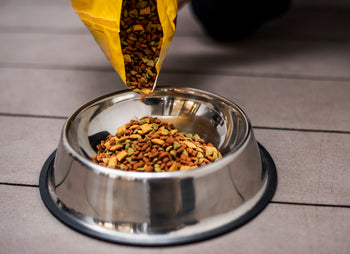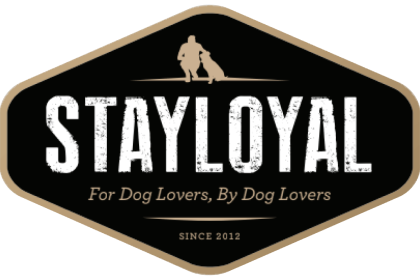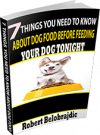Hidden Ingredients in Popular Dog Foods: What You Need to Know

When it comes to feeding your dog, the assumption that all commercial dog foods prioritise quality can be misleading. The reality is that many popular brands include hidden ingredients that may be detrimental to your pet's health. These hidden additives, fillers, and preservatives are often used to reduce production costs, extend shelf life, or enhance the food’s appearance. However, these seemingly minor inclusions can have significant negative impacts on your dog's long-term health.
The Problem with Hidden Ingredients
Pet owners often trust that the dog food they buy is providing the necessary nutrition their dogs need to thrive. However, this trust can be misplaced, especially when certain ingredients are hidden in plain sight on the label. The inclusion of questionable ingredients is often justified by cost-effectiveness and the need for long shelf life. However, many of these additives can be harmful over time, potentially leading to health problems ranging from digestive issues to more serious conditions like liver and kidney damage.
Understanding the common harmful ingredients in commercial dog food is essential for making informed decisions about your dog’s diet. The goal should be to select foods that align more closely with a dog’s natural dietary needs, emphasizing whole, high-quality ingredients over cheap fillers and artificial substances.
Common Additives to Watch Out For
- Artificial Preservatives To Stay Away From
Artificial preservatives like BHA (butylated hydroxyanisole), BHT (butylated hydroxytoluene), and ethoxyquin are frequently used in dog food to prevent the fats from becoming rancid. While they serve this practical purpose, the downside is that these chemicals have been linked to various health issues. BHA and BHT are both synthetic antioxidants that can cause allergic reactions, and some studies suggest they may be carcinogenic, especially with long-term exposure. Ethoxyquin, originally developed as a pesticide, has also been linked to kidney and liver damage in dogs.
These Artificial preservatives are often hidden in plane site on ingredients lists as “Preservative” and “Antioxidant”. They also hide them by using Additive Numbers- (E320), (E321), and (E324) are the ones you want to stay away from.
There is growing awareness about these risks, and many pet owners are now choosing products that use natural preservatives. Ingredients like mixed tocopherols (a form of vitamin E) and ascorbic acid (vitamin C) are safer alternatives that can preserve food without the same potential for harm. Look for these Ingredients like Natural Preservative, Natural Antioxidant and Mixed Tocopherols to keep your pets and family safe.
- Fillers To Avoid if You Can!
Fillers are low-cost ingredients used to bulk up dog food, providing more volume without adding much nutritional value at all. Common fillers include corn, soy, and wheat, which are used because they are inexpensive and provide a source of carbohydrates. However, these ingredients can be problematic for several reasons when added in large percentages to a dogs diet.
Firstly, dogs are primarily carnivorous, and their digestive systems are optimised for a diet high in animal proteins, not grains. Excessive grain-based fillers can lead to digestive issues and contribute to obesity. Additionally, corn, soy, and wheat are common allergens for dogs, potentially causing reactions such as skin irritation, ear infections, and gastrointestinal distress. Furthermore, these ingredients often contain GMOs (genetically modified organisms), which some studies suggest could have long-term health impacts, though more research is needed in this area.
It can be quite tricky to choose a food with mostly animal source protein. First look for the percentage of protein. In general, dry dog foods with protein under 24% will use more fillers than meat, even if the first ingredient is meat. Choose dog foods with protein levels over 28% and where the main ingredients are the meat ingredients. Chicken meal and fish meal are good sources of protein whereas wheat gluten and pea protein do not have as suitable amino acid profile as animal source proteins.
- Artificial Colours and Flavours
Dog food manufacturers often add artificial colours and flavours to make their products more appealing to pet owners. While the bright colours and enhanced flavours might make the food look and smell better, they offer no nutritional benefit and can actually be harmful.
Artificial colours, such as Red 40, Yellow 5, and Blue 2, have been linked to allergic reactions and behavioural problems in some dogs. These synthetic dyes are not derived from natural sources and are primarily used to make the food visually appealing to humans, not dogs. Similarly, artificial flavours are often used to mask the taste of lower-quality ingredients, creating the illusion of palatability. Look out for Artificial Bacon and Cheese Flavours.
The best way to avoid these unnecessary additives is to choose dog food that doesn’t rely on artificial enhancements. Products that use natural sources for flavour, such as real meat and vegetables, are not only healthier but also more in line with a dog’s natural diet.
- Sugar and Salt Should Be Avoided!
Sugar and salt are often added to dog food, and especially to Dog Treats, to enhance the taste, making it more appealing to dogs. However, these ingredients can have detrimental effects on your pet’s health when consumed in excess.
Added sugars, often listed as sucrose, corn syrup, or other sweeteners, can contribute to obesity, diabetes, and dental problems in dogs. Just like humans, dogs do not need added sugar in their diet, and the inclusion of sweeteners is purely for taste enhancement rather than nutritional value.
Similarly, excessive salt can lead to health issues like high blood pressure, dehydration, and even sodium ion poisoning in severe cases. While a small amount of salt is necessary for bodily functions, the levels found in many popular dog treats are often higher than what is recommended.
When choosing dog food and Treats, it’s important to avoid products that list sugar or salt high up on the ingredient list. Instead, focus on foods that derive flavour naturally from high-quality meats and vegetables.
The Importance of Whole, Natural Ingredients
The most significant step you can take in improving your dog’s diet is to prioritise whole, natural ingredients over processed ones. Whole ingredients are those that are minimally processed and retain their natural nutritional profile. For example, chicken, beef, or lamb should be the first ingredient in your dog’s food, rather than meat by-products or fillers like wheat or corn.
Natural ingredients not only provide better nutrition but are also less likely to cause allergic reactions or digestive issues. Foods that contain Animal source proteins, whole fruits and vegetables offer essential vitamins, minerals, and fiber that contribute to overall health. Moreover, these ingredients are more digestible and better absorbed by your dog’s body.
When reviewing ingredient lists, look for transparency. High-quality dog food brands will clearly list all ingredients and avoid vague terms like “Antioxidant” or ingredients labelled as numbers like E320. Transparency in labelling indicates that the manufacturer is committed to quality and has nothing to hide about what’s in their product.
Discover a Dog Food That Truly Delivers
Now that you know how to read between the lines of dog food labels, why settle for anything less than the best? At Stay Loyal, we go beyond the buzzwords and focus on real nutrition—crafted with high-quality ingredients that support your dog's health, coat, and energy. Visit our website today to explore our range of premium dog food, and see why thousands of pet owners trust us to fuel their dogs' vitality.
Give your dog the nutrition they deserve! Explore our premium dog food today.
Final Thoughts
Don't settle for hidden additives and fillers. Stay Loyal is trusted by thousands of pet owners for real, wholesome nutrition. Your dog deserves better.








